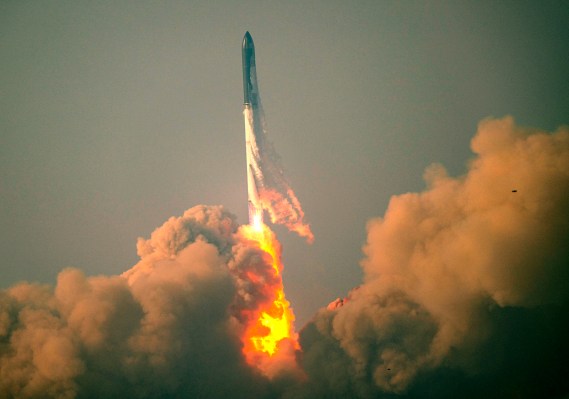Regulators have given SpaceX the green light to launch its super massive Starship rocket for a second time, just a few days shy of seven months after the first orbital flight test that ended in a spectacular mid-air explosion.
SpaceX — which has been on standby for this final launch approval — will attempt the launch this Friday, November 17, from its sprawling facility near Boca Chica, Texas. The two-hour launch window will start at 7:00 AM CST.
The U.S. Federal Aviation Administration said Wednesday that it had awarded SpaceX the launch license for a single Starship flight. On the same day, the U.S. Fish and Wildlife Service completed a written evaluation of the 2022 Programmatic Environmental Assessment finding “no significant environmental changes.”
“The FAA determined SpaceX met all safety, environmental, policy and financial responsibility requirements,” the agency said in a statement.
The rocket has been grounded since the April launch. Groundings and mishap investigations, which are conducted by the launch companies and overseen by the FAA, are a common course when an anomaly occurs during launch.
To say that this is long-awaited is a bit of an understatement. Although the first orbital flight test in April caused plenty of damage — most notably to the launch pad, which was cratered by the Super Heavy booster’s 33 Raptor engines — SpaceX managed to both repair the damage and upgrade both the launch infrastructure and rocket in just under seven months. While the company has been busy, it hasn’t been shy about waiting for the regulator to catch up. SpaceX’s VP of build and flight reliability Bill Gerstenmaier told lawmakers last month that Starship has been ready for its next flight test “for more than a month,” and that it was just waiting on the multiple agencies for their reviews.
To say that there is much riding on Starship’s development — well, that’s also an understatement.
Starship is the most powerful rocket ever made. Standing nearly 400-feet-tall fully stacked, the rocket has two stages: a Super Heavy booster and an upper stage, also called Starship. In the nearer term, the rocket will land humans on the moon for NASA’s Artemis III mission slated for 2025, as part of contracts topping out at around $4 billion; in the longer term, it’s designed to fulfill SpaceX CEO Elon Musk’s ambitions to “spread the light of consciousness to the universe” — which is to say, colonize Mars.
But the company has plenty of work ahead of it. Starship’s first orbital test flight was cut short shortly before stage separation — when the Super Heavy booster separates from Starship — and the vehicle had to be exploded in mid-air over the Gulf of Mexico after it started tumbling back to Earth around four minutes after lift-off. The company had some issues with the booster’s 33 methane-fueled Raptor engines, three of which didn’t fire at all and two more that were knocked out mid-flight.
But SpaceX says its introduced upgrades to the engines, a new method to separate the two stages and other improvements that will hopefully see this mission go farther than the first. Looking ahead, the company also needs to crack the code of in-orbit refueling, a key part of the Artemis architecture that involves Starship re-upping on propellant while in orbit.
